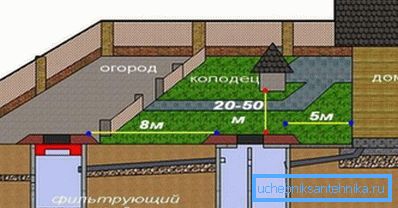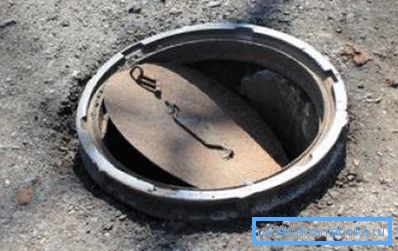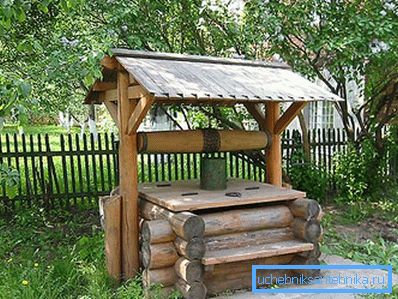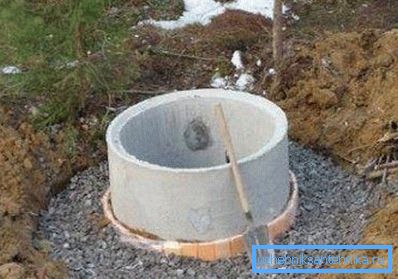What should be the distance from the well to the well -
To arrange a well on the site, it is not enough just to find a place with an accessible level of aquifer. The fact is that there are a number of other requirements for the location of the water supply source, and if they are not followed, the water will simply be unsuitable for food use.
Next, we consider these requirements, following which you can avoid problems associated with poor water quality.

Sanitary requirements
First of all, it should be said that the choice of a place for the execution of the well must necessarily be made with the participation of a representative of the state san-epidemiological station or sanitary inspection. You can also invite a doctor assigned to this area for these purposes..
However, you can first find yourself the most suitable place.
According to SanPiN 2.1.4.544-96:
- The source should be located on an unpolluted area located at a distance of at least 50 meters (upstream of the aquifer) from existing or potential pollutants, for example, the distance from the sump to the well should be at least 50 m.
- The site should not be swampy or flooded with flood waters. It is also prohibited to install water sources in places that are exposed to landslides and other types of deformations.
- The source should not be located closer than 30 meters from highways and highways.
- It is not advisable to have a source on the slopes, on the banks of rivers or near ravines, because untreated river or groundwater will inevitably enter it.

Note! If a possible source of pollution is located above the well on the terrain, then the distance between them should be at least 80 meters, and in some cases 150 meters. This moment should be taken into account if neighboring areas are located higher in relief, since the distance between the cesspool and the well should already be not 50, but 100 meters.
What are the sources of pollution?
Sources of pollution include a number of objects:
- Sump toilets and pits;
- Burial places of animals and people;
- Warehouses of pesticides and fertilizers;
- Industrial enterprises;
- Sewer facilities
- Landfills, etc.

From this it follows that when choosing a place, you need to focus on the distance from the well to the toilet, as well as the distance from other objects of pollution in your own and neighboring areas. This is due to the fact that undesirable elements will penetrate into the water, as a result, it can damage health.
Distance between two wells
The minimum distance between water wells according to SNiP should also be at least 50 meters, since the well is a potential pollutant. This is due to the fact that it can get pollution from above or through leaky walls.
The minimum distance between wells that extract water from different aquifers can be reduced to 30 meters. However, such cases are rare, as a rule, sources in neighboring areas are made at the same depth.

Distance to residential buildings
As far as the distance from the house is concerned, there are no restrictions, however, the distance from the well to the foundation must be such that the construction equipment can drive up at its construction.
In addition, when the distance from the well to the house exceeds 100 meters, the source becomes not very convenient to use. Especially it concerns those cases when water should be typed manually.
Tip! It should be borne in mind that in the process of constructing a structure close to a building, its foundation may be damaged. Therefore, it is desirable that the distance from the house to the well be, nevertheless, safe.

Design requirements
So, you decided on the choice of place, and the distance between the wells of the water supply system and other sources of pollution was correctly chosen. But this is not enough for the source of the water supply to be always filled with clean drinking water.

Therefore, it is necessary to familiarize yourself with the requirements for the construction of the well itself, especially if you are going to do it yourself.
They consist of several points:
- The column should have a cap (aboveground part), which protects the mine from clogging, and also serves as a barrier for it and allows water intake. The height of the tip is not less than 0.7 meters.
- The cap should be closed well well or a reinforced concrete ceiling with the hatch. From above it should be covered with a canopy or to equip the "house".
- Along the perimeter of the tip, if the distance from the well to the building allows, it is necessary to make a “lock” of carefully compacted clay 2 meters deep and 1 meter wide. In addition, you need to perform a blind area of concrete or asphalt, with a diameter of 2 meters, always with a slight slope.
- A fence should be made around the column and a bench for buckets should be built.
- The walls of the mine should be well insulated structure from penetration of the water pipe and surface runoff. It is best to use concrete well rings, the drains of which are sealed with a solution, as required by the instructions.
- Water intake part of the mine, intended for the accumulation and inflow of groundwater, need to be buried in the aquifer. For better water flow, the bottom walls should have openings.
- To prevent the soil from puffing up by the ascending streams and the appearance of turbidity in the water, a return filter should be poured at the bottom.
- For descent into the mine, when performing repairs and cleaning the source, it is necessary to install cast iron brackets staggered at a distance of 30 cm from each other.
Here, perhaps, all the rules that you need to know before making a source of water supply.

Tip! Before using the well after its installation, the water must be completely pumped out twice. Before using it for food purposes, it is advisable to perform chemical and bacteriological analysis in a specialized laboratory. However, keep in mind that the price of these services is quite high.
Conclusion
All of the above requirements must be strictly followed. This is the only way to ensure that the well is filled with potable water. Otherwise, all the construction costs will be in vain, or even worse - the water from it will harm your health or the health of your family members.
Additional information on this topic can be obtained from the video in this article.